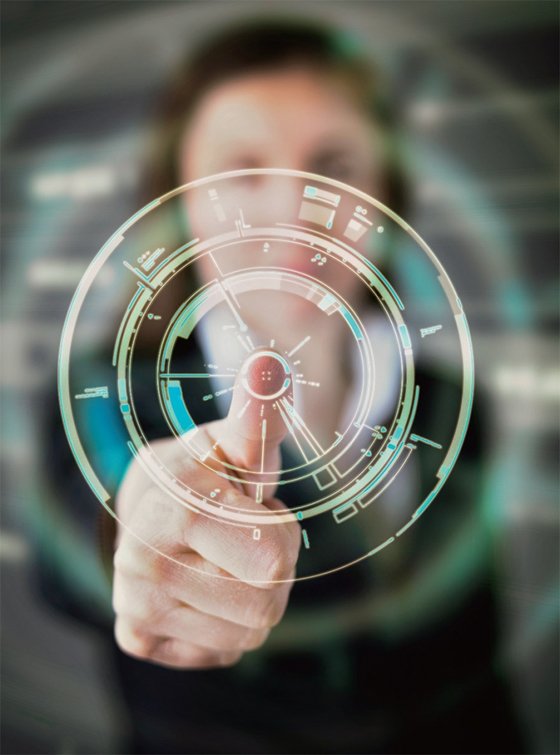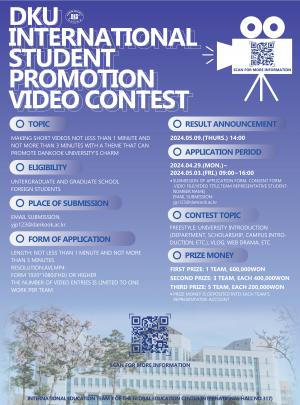As science and technology advance, previous biometric technologies are progressing further, now integrating AI for even more enhanced applications. Additionally, with the increasing utility of these technologies, companies are swiftly expanding their businesses. The Dankook Herald has brought forward information on the types of biometric technologies available and their applications.
 |
| ▲ Making a Payment Through Biometric Technology (Photo From Yonhap News) |
Biometric technology refers to the technology that utilizes an individual's physiological or behavioral characteristics for identification purposes. These features include fingerprints, facial recognition, vein patterns in the hand, and voice, among others. Biometric technology began with the publication of 'Fingerprints' by anthropologist Francis Galton in 1892, where he introduced the uniqueness and permanence of fingerprints. Fingerprints were first utilized in criminal investigations in Argentina during the same year. In the early 20th century, law enforcement agencies began adopting fingerprint identification as a means of identity verification. Along with the advent of the Fourth Industrial Revolution, there has been a significant shift toward digitizing and storing various forms of information for utilization by individuals, businesses, and government organizations. This has led to an increased need for surveillance and security measures, consequently contributing to the expansion of the biometric identification market. In the post-COVID era, with the heightened activity in cyberspace, mobile biometric authentication technologies utilizing biometric information on mobile devices are being applied in various aspects of daily life.
Biometric technology involves capturing and storing an individual's unique and immutable data and comparing it using recognition algorithms. Biometric recognition eliminates the need for ID cards or passwords, making it an increasingly popular choice due to reduced concerns about theft or loss. This technology finds applications in various fields, including immigration, criminal investigations, access control, administrative tasks, and finance. It is poised to replace traditional authentication methods in digital door locks, unmanned automated machines, and financial payment systems.
The place where services need to cater to a large and diverse customer base, voice recognition technology is steadily gaining prominence. KT, for example, has developed long-distance voice biometric technology that analyzes input voice data, extracts features, and distinguishes the speaker. This technology underlies the popular AI assistant, GIGA Genie, which serves around 8 million daily users. GIGA Genie relies on large language models (LLMs) equipped with approximately 40 billion parameters, applying long-distance voice biometrics to analyze input voice data, extract features, and distinguish speakers. Creating sentences that closely resemble those generated by humans, through statistically natural word combinations, poses a significant challenge. It necessitates a substantial volume of training data, as well as effective algorithms and hardware for proper data processing. For instance, modern LLMs use terabytes of corpora data, equivalent to 262,144 copies of the English Bible, to perform effectively. Thus, biometric technology continues to emerge in unexpected corners of our daily lives, with various companies harnessing its potential to drive diverse applications.
However, each biometric recognition has technical limitations. Fingerprint recognition plays a pivotal role in crime investigations, but it faces challenges when it comes to recognizing damaged or dried fingerprints. Besides, facial recognition is vulnerable to lighting conditions or makeup, and iris recognition is expensive and inconvenient if sensors are not precisely fixed. These cases underscore that biometric recognition has problems with security and privacy in addition to technical issues. Since biometric identification is a means of identifying users, it has the potential to be exploited for fraudulent purposes, such as forging public documents like passports or criminal records. It can probably cause more damage than using credit cards or financial passwords.
 |
| ▲ Using Fingerprint For Biometric Technology (Photo from The JoonAng) |
Moreover, authentication data, such as fingerprint or voice recognition, can be leaked from corporate servers, devices, or software analyzing the information of individuals. The potential exposure of personal data raises concerns about both the misuse of personal information and the security of the database storing this body of information. For example, in 2015, the U.S. Office of Personnel Management had 5.6 million fingerprints stored in their database leaked as a result of an APT attack. These days, fingerprints increasingly replace passwords as a new security measure for unlocking one’s smartphone or even bank accounts. It is also reminiscent of George Orwell’s ‘Big Brother’. For instance, supermarkets in the UK use facial recognition to make ban lists, while China utilizes facial recognition to solve crimes and suppress the public. They are claiming they use facial recognition for only maintaining public order, but some are concerned that it may be abused to monitor the public.
Although biometric recognition is technically great for security and convenience, we’re still experiencing ethical problems, such as exploiting personal information or invading privacy. As always, science and technology have been developed for a better life, but some people are more likely to misuse technologies for their benefit.
Biometric technology quietly permeates in our lives, often working behind us to enhance convenience and personalized services to build a better environment. However, along with its growing utility, anxiety also increases because the application of biometric technology is continuously expanding in various realms. In particular, biometric recognition as a concept of ‘Big Brother’ has become an issue recently. As a result, biometric technology is a double-edged sword, offering both promises and challenges to be addressed.
박상우, 김영준, 홍채연 dankookherald@gmail.com

 Vote for the Campus Brand Naming!
Vote for the Campus Brand Naming!

![[Campus Magnifier] Let's Surf the Library!](/news/thumbnail/202404/12496_1765_4143_v150.jpg)




